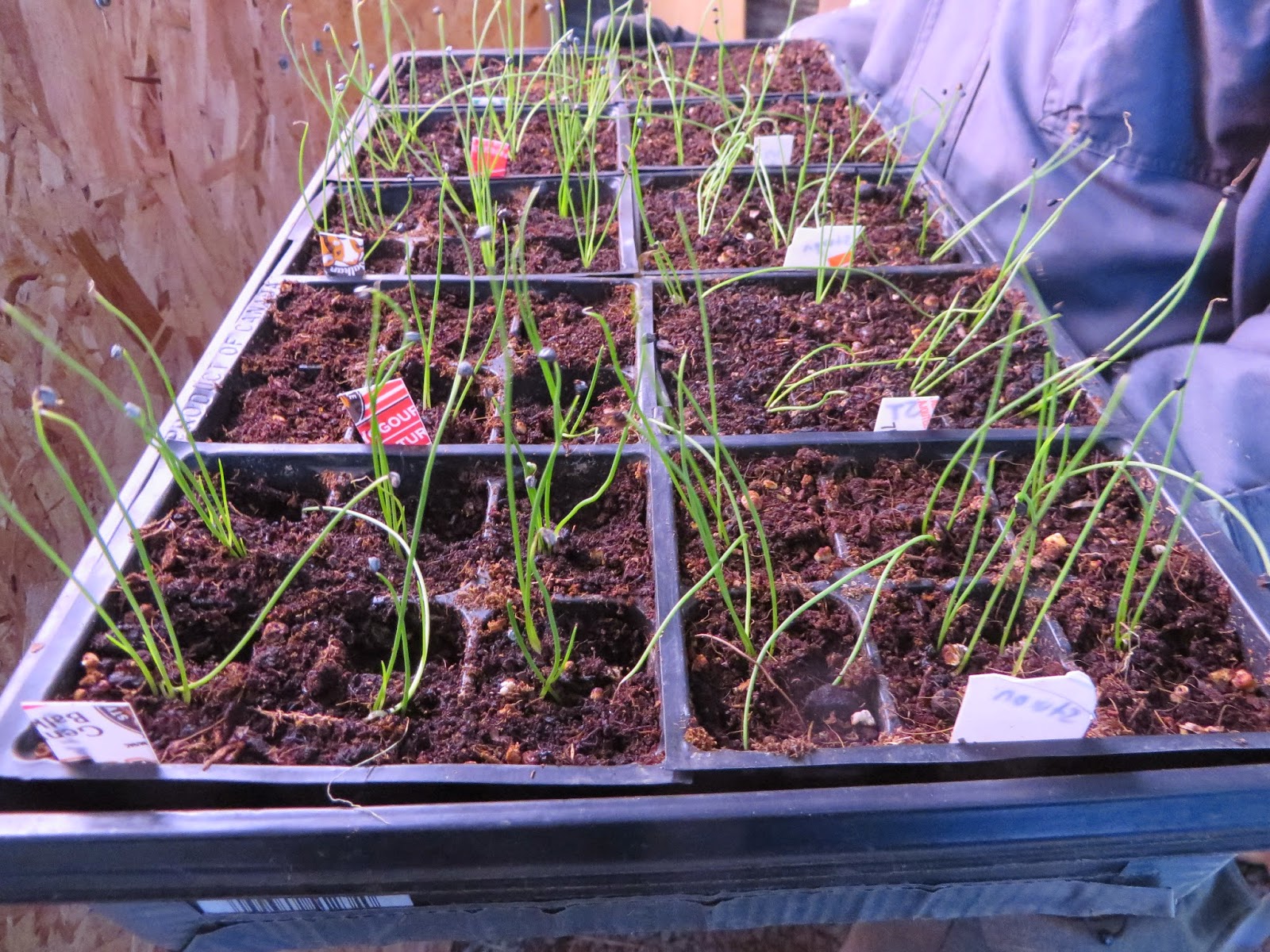Big news today - I have heard that our piglets are on the way. Their anticipated arrival is in a month or so. They'll spend the first few weeks with their mum, and then make the journey to Whitsend in late May.
Pork prices (listed on the 'Whitsend Pork' Page) shall remain the same as last year. I thought I'd announce this after hearing about the rise in the price of factory produced meat last year.
The cost of my pork inputs have not changed, and the number of pigs in the supply chain I source them from seems more robust than last year.
First choice for pork sales are offered to Whitsend season customers, with the second offering expanded to contacts and inquiries of interest generated from our farm-gate stand and the open house. Harvest is anticipated either late September or mid October.
Nursery Updates:
Nursery Updates:
The onions are going to get a trim to keep them a little more manageable. It thickens the stalks and ensures they remain a little more upright.
If left, the first leaves flop over and inevitably get damaged when trays are moved about.
It appears that our bulb onions this year will be white/yellow types. The 'RedWing' variety germinated poorly, it's seed was a little old. The later rounds of yellow onions have germinated well, it looks as if I'll be planting a few more than originally anticipated. Assuming they grow well this year, we may have a few more per basket than originally anticipated.
Red Onions typically have a longer shelf life, though I have found our Cortlands and Sturons have lasted well into the winter (early February this season, stored in a less than ideal 8 degree room).
Typically, the lights are set to a timer that comes on after peak electricity hours. This gives the sprouts and the seeds about a twelve hour day.
I turn them on during the day as the barn is too dark to see what i am doing.
I now have three banks of lights going, to accommodate the tomato, pepper, and eggplants.
I should see their first leaves soon (The eggplants have already started to germinate).
Here is the Echinacea.
In the next couple of weeks, I'll be starting the Zinnia's and a few others.
When the ground begins to thaw, I'll direct sow bachelor buttons and sweet peas in the next rock garden, these should eventually establish and continue self seeding in future years.
Most of the flowers we planted last year (Leopard Flowers, oppopeo, calendula, nicotania, etc) are self seeding. It will be interesting to see how many of these take care of themselves.
I'm very curious about how well the evening primroses overwintered. I planted these in the rock garden last year. With the extended fall season, they became quite established, some even flowered.
Primroses are a biennial, it is rare for them to flower in their first season.
The cut flowers are a complementary addition to your tables. As well, the flowers are a boost to the pollinators, which in turn attract the birds, which in turn moderates the insect population.
The snowpack is slowly receding. Here is the growing field two weeks ago.
As of March 23, the field is showing signs of emerging from under the snow.
No signs of mice near the rock garden, garlic, or compost (see previous posts regarding fox tracks).
For that matter, there have been no mice tracks around the barn all winter, very unusual. Must have been a bad year for them around here.
 Here is the field as of March 24. Note that the straw on the garlic beds and more soil in the east field is starting to appear.
Here is the field as of March 24. Note that the straw on the garlic beds and more soil in the east field is starting to appear.
The snowpack is about 4 to 8 inches deep. In some places, it is starting to clear.
 Here is the field as of March 24. Note that the straw on the garlic beds and more soil in the east field is starting to appear.
Here is the field as of March 24. Note that the straw on the garlic beds and more soil in the east field is starting to appear.The snowpack is about 4 to 8 inches deep. In some places, it is starting to clear.

To the right is the compost pile. Scroll up to the more recent post to see the difference three weeks makes.
Talk to yo soon,
Bob






